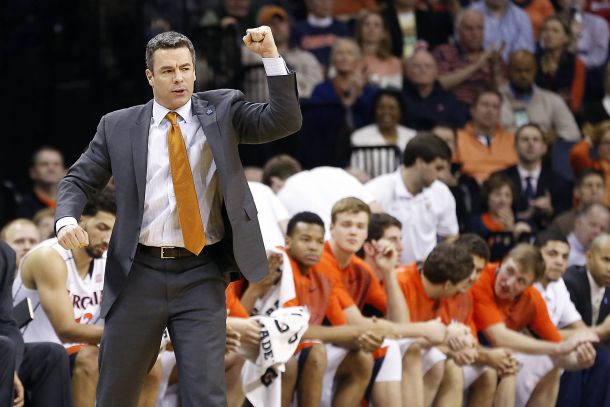College basketball is a suffering game. A game that has fallen behind the times. Now, there is a strong voice from the fans and coaches that are starting to realize that we all need to help get this sport back to its former glory.
ESPN recently conducted a poll of almost 500 college coaches about changing the shot clock from 35 seconds to 30 seconds. The results were not surprising, 59% of the coaches were in favor of moving the shot clock down to 30 seconds and another 10% for moving it to 24 seconds. That is nearly 70% of coaches that would like to shrink the shot clock.
Lets break down the differences between a 35, 30 and 24 second shot clock.
The 35 second shot clock has been around since the 1993-94 season. In the beginning, it was a positive step. Prior to that season, it was a 45 second shot clock that had been used since its adoption before the 1985-86 season. The shot clock took away the infamous “4-corner” offense and stalling possessions in order to retain a lead. Since then, the average athlete has gotten bigger, stronger and more athletic due to world class strength and conditioning programs, along with developmental leagues that start at a young age. These kids are yearning for a chance to showcase their skills an abilities in an environment that is conducive for it. College basketball has long been adjusted to 35 seconds and now it almost seems bored with the amount of extra time.
The 30 second shot clock is what is used by women’s college basketball. While only removing 5 seconds from the shot clock in a trip down the floor, over the course of a 40 minute game, that would add several possessions and would result in a faster pace and higher scores. The change would be an easy adjustment for coaches and players alike, therefore it makes this option the most likely to be passed and acted on.
The 24 second shot clock is one that some coaches and administrators feel is too extreme, but by what standards? The NBA and all international play is on a 24 second shot clock. The only post high school league in the world that does not play within the 24 second shot clock is men’s college basketball in America. A large majority of the most talented players in the world come from America and come through the NCAA men’s basketball ranks. “There are (15-year olds) in FIBA competition all over the world that are able to play with a 24-second shot clock. But we can’t?” said Central Florida assistant Tim Thomas.
With the overwhelming talent, we need to find a way to speed up the game, not slow it down. Sadly, most of the time, we watch an NBA game and say, “why couldn’t he play like that in college?”. The reason is because we would rather watch two guards play catch on the perimeter for 25 seconds and then run a quick offense at the end of the shot clock.
This year the NCAA did experiment with the 30 second shot clock during exhibition games in the pre-season, and the NIT will play all of its post-season games adhering to the quicker shot clock, as well.
Even though I believe that the shot clock should be the top priority for this upcoming 2015-16 season, there are also other changes that could positively affect the game. Those include, changing from two halves to four quarters and the court layout.
For the sake of consistency, the NBA plays by quarters, so why shouldn’t college basketball? Playing quarters takes away constant breaks from the game, like the overuse of timeouts by coaches and the over-saturation of media breaks. This is yet another way for us to speed up the sport. Could you imagine a game where there wasn’t a commercial every 5 minutes and you squeezed all the action in 2 hours or less, as opposed to 2.5 hours or more?
As for court layout, I have heard many talking heads jump on their talk shows and say that the 3-point line should be extended out to NBA range, but, I disagree, for now. I think that will be a topic in 10 years, but not currently. There are many more pressing matters at hand. Even though, if we were to extend it back, it would open up the floor allowing much more freedom of movement and subsequently more points and action.
With the said, the court layout changes that I believe should be put into effect now is all about the block/charge circle under the basket.
Would you rather see someone flopping around under the basket and a controversial call by the referees? Or, a drive into the lane resulting in a volleyball-style block or spectacular dunk? I think we can all agree, the second option sounds much more fun. With the circle being so close under the basket, you end up getting a clog in the middle and coaches telling their players to jump stop or shoot floaters. If we were to bring it out, it would leave more room for those Sportscenter Top 10 highlights that would bring more attention to the game. It would also spread out the middle of the floor allowing the action to flow more freely, and again, resulting in more points and action.
We will have a chance to see some changes this year when the Men’s Basketball Rules Committee meets May 13-15 in Indianapolis. If they pass a recommendation for the shot clock to be changed, it will then go to the Playing Rules Oversight Panel on June 24.
Remember, these changes shouldn’t be made for the programs, the players, the coaches or anyone else. These changes should be made for the love of the game.









































